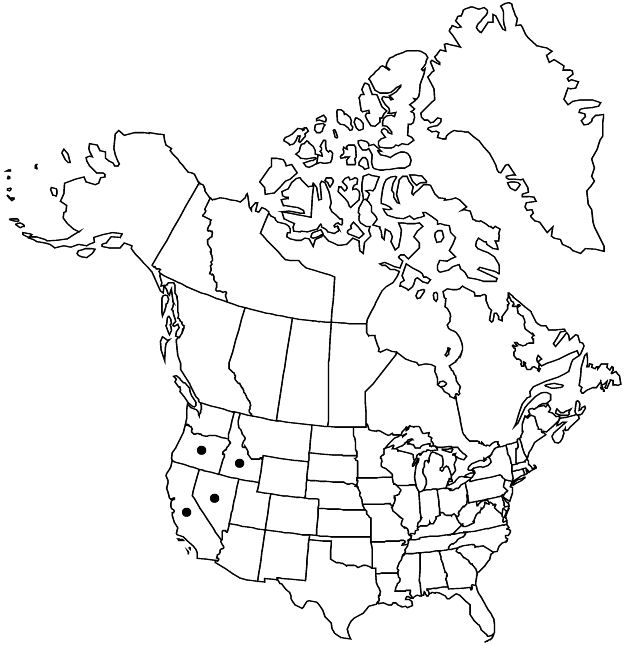Difference between revisions of "Ivesia baileyi var. beneolens"
Syst. Bot. 14: 236. 1989.
FNA>Volume Importer |
FNA>Volume Importer |
Revision as of 20:36, 24 September 2019
Basal leaves: sheathing base sparsely glandular abaxially, otherwise glabrous. Pedicels 5–6+ mm at flowering, to 15(–30) mm in fruit. Flowers 5–40, 7–10 mm diam.; epicalyx bractlets narrowly lanceolate, 0.8–1 mm, usually less than 1/2 as long as sepals; hypanthium interior pale green or cream to maroon; sepals (1.2–)1.5–2.5 mm; petals white; filaments white, anther margins reddish. Achenes ± 2 mm, rugose. 2n = 28.
Phenology: Flowering summer.
Habitat: Crevices on north-facing cliffs or similarly protected sites in canyons and rocky outcrops mainly of volcanic origin, in sagebrush communities, conifer woodlands
Elevation: 1000–2600 m
Distribution

Calif., Idaho, Nev., Oreg.
Discussion
Variety beneolens occurs from Harney and Malheur counties, Oregon, to Modoc County, California, and to Elmore, Owyhee, and Twin Falls counties, Idaho, and Elko and Humboldt counties, Nevada. Plants are particularly common on the vertical sides of the river canyons that cut through the Owyhee Plateau. The variety also barely enters the Idaho Batholith on volcanic intrusions along the South Fork of the Boise River.
Selected References
None.